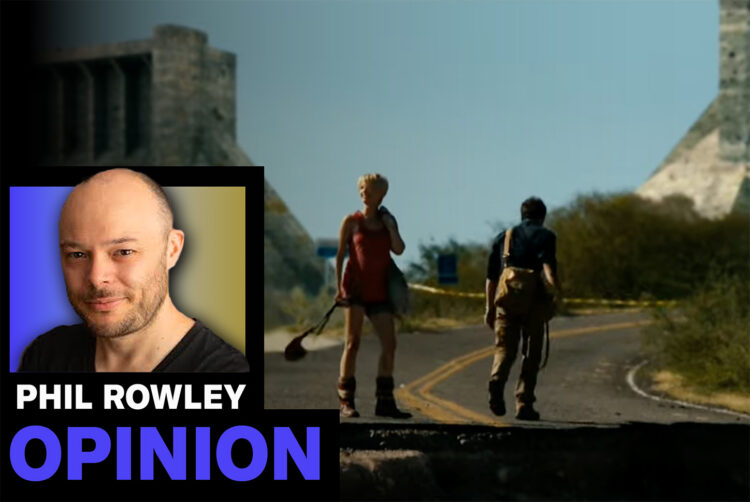AI creativity is about raising the floor as well as the ceiling

Opinion
Ideas become easier to realise when tools cost less, resulting in more creativity. Gen AI can help us all progress our creativity and output, regardless of skill and talent.
Technology that enhances creativity has long existed.
From stencils to keyboard synthesisers to Photoshop, we are accustomed to using devices and platforms as a “gravity assist” for our endeavours, using another body to slingshot us faster into the unknown.
But while generative AI is yet another technology in a long line of those that codify the business of creating, it has garnered a disproportionate amount of attention because it seems to have crossed a significant threshold.
Now, for the first time, people can create imagery without even possessing an understanding of shape and form or light and shade, or indeed be acquainted with the works of Caravaggio, Monet or Dalí. Seemingly, a text prompt is all that is required.
This has caused some consternation among communities who create for a living, with robust commentary ranging from “we’re doomed” to “we’re fine because a machine could never paint The Last Supper“.
But these are oversimplified responses to a more nuanced issue. We need to descend into the particulars to get a better sense of what’s going on here.
The future of enterAInment
In OMG Futures’ The Future of EntertAInment: Four Forced Guiding Entertainment in the Era of AI, we investigate how AI will impact the entertainment industry through the lens of four macro-forces, all driven by AI and all signified by the letter D.
Democratising: AI raises the floor and ceiling on everyone’s creative efforts
Diffusing: AI seamlessly morphs one format into another, meaning all content will be multimodal by default
Dimensionalising: AI supercharges the already gargantuan games industry and makes content navigable in three dimensions
Dismantling: AI empowers emerging markets to change the emphasis within the global entertainment landscape
But let’s concentrate on that first one, democratising, where AI makes creativity available to more people.
All the gear and no idea
Recently on social media, I saw someone lambasting the notion of the “democratisation of creativity”.
His argument was that someone could possess all the creative tools in the world, yet still have no talent. Just like the person who is briefly obsessed with skiing or the guitar and buys the most expensive kit they can afford, even though it confers no advantage because of an inherent lack of skill. In short, all the gear and no idea.
I have some sympathy with that argument. Possessing Photoshop or Canva or Midjourney does not immediately make you an artist, in the same way that the mere act of buying a stretched canvas and a paintbrush set did not make JMW Turner an artist. The skill needs to be present.
But while the falling cost of technology does not guarantee creativity, can we honestly say that it will not give voice to more of us possessing unexpressed and unrealised creative ambitions? I think it will.
Whether enabling teenagers to become bedroom programmers in the 1980s, putting camcorders into the hands of family “filmmakers” in the 1990s or giving amateur bloggers a voice in the 2000s, ideas become easier to realise when tools cost less. Meritocratic creativity, in essence.
That means more creativity, not less. Creativity is not a zero-sum game. The act of someone finding their creative voice through a democratised technology does not diminish those with professionalised talent who can use that technology to aid their realisations. The point of the democratisation is that it is a rising tide that lifts all boats.
To illustrate this properly, we must understand the difference between “raising the floor” and “raising the ceiling” on creativity.
Floor vs ceiling
Let’s look at this point with reference to two creators’ use of technology and their resultant career path.
First, Isaac Arthur is a renowned futurist and YouTube video essayist. He has done a great deal of thinking on rocketry, space habitats and “terraforming”, and has a deep understanding of his material and how to structure it for an audience.
But when Arthur started out making videos, there was one thing at which he was less skilled: production. The visual accompaniment to his sci-tech lectures were a homemade mix of mismatched jpegs and free stock footage that sat behind intellectually profound content.
Since Arthur has become famous for his output and is now president of the US National Space Society, the quality of his videos has transformed. But can we say that if he were coming to prominence in 2024, with no professional production resources at his disposal, that he would not be using free gen AI to create compelling visuals to accompany his predictions?
In this regard, gen AI is not a threat to professional creativity, but an entry-level tool that raises the floor for those with skills that lie elsewhere other than in visual aesthetics; a gravity assist that does not diminish the prowess of those with real artistic skill.
In contrast, take Hollywood film director Gareth Edwards. From an early age, Edwards had the “artistic eye” and pursued his love for the visual arts through academia, earning a master’s degree in the subject.
Later, he became known for his breakthrough sci-fi classic Monsters, in which he delivered an eerie tale of an alien invasion on a micro-budget, using a film crew of just six people across a three-week shoot.
Notably, Edwards created all the special-effect shots of 40-foot stalking aliens at home on his computer using “off-the-shelf” Adobe products.
The surprise hit attracted the attention of Hollywood, granting him the keys to the reboot of Godzilla and Star Wars: Rogue One, then 2023’s The Creator — appropriately enough about AI.
No competition
But note the difference between Edwards and Arthur.
Moving forward, Arthur and similar influencers will be using gen AI to raise the floor on content and supplement the absence of skills in one area. Edwards and his fellow filmmakers will be using tech at the other end: to exponentially multiply their natural talent.
Furthermore, Arthur and his kind will be using gen AI for visuals because of its simple prompt interface. Edwards and other visualists will be using tools far more complex and “hands on”, because filmmaking still requires creators to use their experience to make choices about light, shade, angles, colour palette and framing.
In short, Arthur is not about to replace Edwards in the same way that restaurateurs are not worried about being upstaged by home-delivery meal-kit services. Both are using technology to progress their content output, and their careers, according to their areas of expertise and skillset. They are not in competition.
Again, this is not a zero-sum game.
Implications for marketing
When we talk about gen AI’s integration into the marketing industry, we need to keep this idea of the ceiling versus the floor front of mind.
Brands can use the tech to raise their ceiling, still accessing professionals’ raw creativity to create messages that resonate with an audience. Crafting will always be better than cloning and origination will always top emulation.
But that doesn’t mean future marketing creatives can’t take their cue from Edwards and, providing that talent is there, use the technology as a multiplier.
In contrast, the floor of the average influencer’s output is set to rise, now that it can hit a minimum aesthetic benchmark for less. Arthur now has nearly 1m subscribers and 150m views. With the user-generated creators of his ilk improving their quality thresholds, brands would do well to investigate aligning with makers who have amazing ideas that resonate with audiences, expressed in a way that confers legitimacy.
So, when it comes to technology assisting creativity, this should not be about an “either/or”, or even a “versus”. It’s about “and”.
 Phil Rowley is head of futures at Omnicom Media Group UK and author of Hit the Switch: The Future of Sustainable Business. He writes a monthly column for The Media Leader about the future of media.
Phil Rowley is head of futures at Omnicom Media Group UK and author of Hit the Switch: The Future of Sustainable Business. He writes a monthly column for The Media Leader about the future of media.




